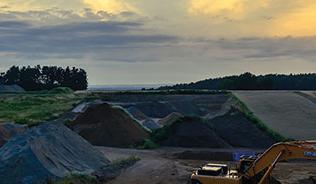On the 18th July the EIA Community met for its latest debate to discuss the transition from the EIA stage of a project to the construction stage. The event featured three expert presentations which are discussed below.
Bridging the gap between EIAs and construction
Presented by Eleni Antoniades with breakout discussion facilitation support from Tim Snell and Nicola Parker.
From inception to completion, a development project goes through many stages, involving a multitude of stakeholders with varying vested interests. To ensure the best environmental outcomes from a project, it is vital that the different stages of development are connected to ensure knowledge sharing and best practice throughout the project lifecycle.
However, historically there has been a gap in both communication and understanding between EIA professionals and construction professionals. Three of the key reasons for this are:
- Time – the length of time between when an EIA is conducted and when construction begins varies widely, but usually involves time for planning and tender which can take more than 6 months.
- Regulations – different regulatory frameworks govern each stage, so EIA professionals and construction professionals tend to be familiar with a different sphere of regulations.
- Expertise – different professionals tend to work at the different stages, so there is little continuity of personnel between the different stages. Despite the developer remaining the same throughout the process, the organisations involved at the EIA and construction stages tend to be different.
On a positive note, it appears that the third point on this list is starting to shift, with the majority of attendees at the debate (82%) indicating they had worked in both EIA and construction phases of a project and 41% having a hands-on role in construction.
Key areas of discussion
Through breakout discussions the group explored a hypothetical scenario where they constructed an environmental budget for the construction phase of a project, considering costings from the construction professional perspective and the EIA professional perspective. There was alignment between the groups in terms of the importance of addressing environmental concerns, but there was a noticeable difference in the allocation of funds to periodic rather than baseline environmental surveys, with the construction group focusing on baseline one-off surveys.
There was consensus that project development needs to be an iterative process with each stage feeding into the next. This was highlighted by some key areas of discussion at the debate highlighting the importance of EIA being used as a tool to shape the project outcome and with EIA itself being shaped by the technical chapters and findings.
To achieve this, it is important for there to be a two-way feedback process between the project stages and for construction professionals to be involved earlier in the project timeline. This would lead to a reduction in the number of environmental impacts of construction which are not picked up in the EIA screening stage; typically EIA professionals tend to focus on site-based impacts rather than transboundary impacts like water use and importing of materials.
Training for EIA professionals in the construction stage and vice versa is paramount to bridging this gap and ensuring there is a common understanding between those involved in the different stages. This will help support the development of practical and cost-effective design and mitigation measures that maximise positive environmental impacts.
How can developments support biodiversity?
Biodiversity Net Gain
Development can impact the environment in many different ways, with biodiversity often being negatively affected due to ecosystem disturbance. In recognition of the importance of maintaining biodiversity for myriad ecosystem services, the Environment Act 2021 provides a legislative requirement for all development schemes in England to deliver a mandatory 10% Biodiversity Net Gain (BNG).
Louise Fox, Senior Ecological Consultant at Thomson Environmental Consultants, provided an overview of BNG and how it can be measured, as well as exploring the links between EIA and BNG assessments. The two assessments are fundamentally different, with BNG assessments only considering habitat types, being purely quantitative and taking no account of significance. However, the two assessments do share a strategic aim - reducing the impacts of development on the environment. Therefore, despite their differences, BNG can feed into EIAs in a useful way.
BNG cannot fit neatly within a technical chapter of the EIA but should be considered in a complementary way; measures taken to support BNG will often have other positive environmental outcomes. They can therefore both be used to identify opportunities for better environmental outcomes from development, particularly if involved early in the design process of a scheme.
Habitat creation
Meeting BNG requirements often relies on habitat enhancement or creation, and this can be done either onsite or offsite.
Tim Snell, Chartered Planning Consultant, explored a case study example of habitat creation in a major infrastructure project, highlighting how biodiversity can be supported in practice. The case study is also exploring a project which is currently in the stage of development between planning and construction, providing some valuable lessons as to how an environmentally-led project can be realised through to delivery.
Next steps
Developments consist of a number of different phases, often with different professionals and organisations involved in each phase. To ensure the best environmental outcomes it is vital that professionals understand the different phases of the process and that communication is facilitated between them. It is only through a collaborative and iterative process that we can move towards developments that are truly sustainable and work for people, planet and nature.
With this in mind, our next debate has been organised with the Institution of Civil Engineers (ICE) and will focus on supporting collaboration between EIA professionals and engineers to support good design.





